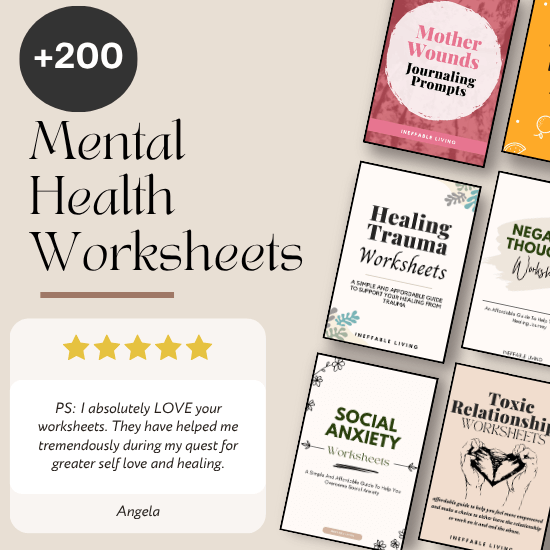If you’re looking for simple, effective, and free trauma worksheets, this post gathers powerful tools to help you understand your triggers, calm your nervous system, and gently process what you’ve been carrying. These resources focus on grounding strategies, trauma-informed reflection, emotional regulation, and rebuilding a sense of safety so you can move forward with more stability and inner strength.

Trauma Worksheets
Adverse Childhood Experiences Worksheets
List of Helplines
54321 Grounding PDF
Big T Trauma vs. Little t Trauma Worksheet
Betrayal Trauma Worksheet
Brain Dump Worksheet
DBT Mindfulness Worksheets
Emotional Abuse Checklist
Emotional Abuse Recovery Worksheets
Emotional Coercion Worksheet
Empty Chair Exercise
Exposure Therapy Worksheet
Grounding Objects Exercise
Injustice Trauma Worksheet
Inner Child Healing Worksheets
Inner Teenager Healing Worksheets
Medical Trauma Worksheet
Panic Attacks Worksheets
Post-Traumatic Growth Worksheet
Self-validation worksheet
Shame Worksheets
Therapy Goals Worksheet
Therapy Worksheets
Verbal Abuse Worksheet
Coping with Chronic Hypervigilance Worksheet
Coping With Emotional Flashbacks Worksheet
Trauma from Financial Abuse Worksheet
Trauma Triggers Worksheet
Window of Tolerance
Survivor Syndrome Worksheet
Self Therapy Questions To Ask Yourself
How to Use Mental Health Worksheets
Mental health worksheets become powerful when you use them with intention, curiosity, and gentleness. Instead of treating them like schoolwork, think of them as tools that help you understand yourself more deeply and track your emotional growth over time.
Tips to Get the Most Out of Them
- Use them when you’re calm so you can reflect clearly.
- Write without censoring yourself — honesty creates insight.
- Focus on awareness, not perfection or “right answers.”
- Revisit old worksheets to notice growth and patterns.
- Take breaks when emotions feel heavy; pacing is part of the process.
- Use them before therapy to clarify what you want to discuss.
- Use them after therapy to integrate insights and next steps.
- Keep them in one place so you can see your journey unfold.
- Treat each page as a safe space for reflection, not self-judgment.
- Let the worksheets guide you, but trust your intuition as you use them.

